Two blocks of masses m1 and m2 joined to a non deformed spring of length l0 and stiffness k as shown in figure. They start at the same height and the hanging block is lowered through a distance h causing the block on the incline to rise.
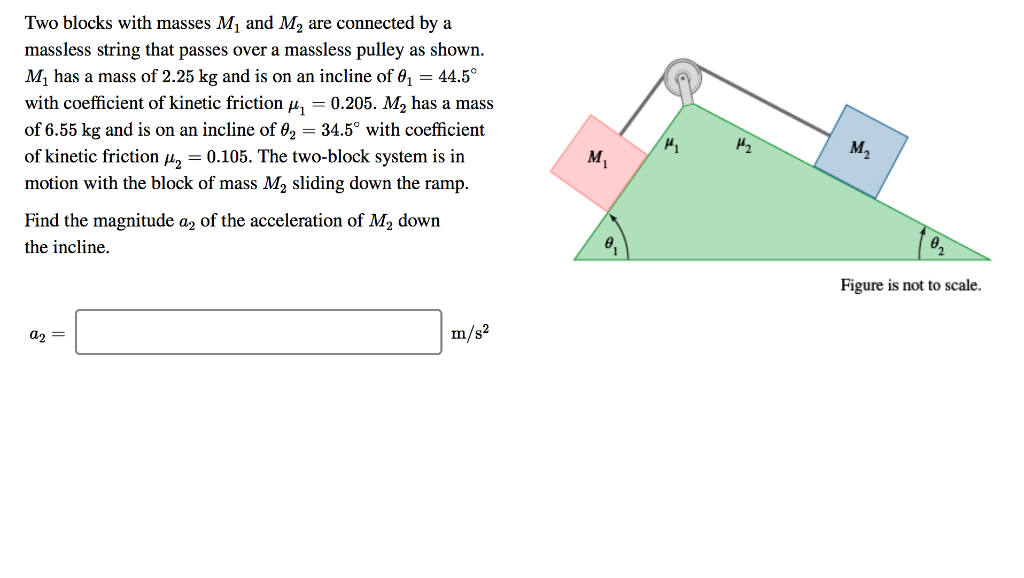
Solved Two Blocks With Masses M1 And M2 Are Connected By A Chegg Com
So we have a common acceleration a So we get F m1 m2a.
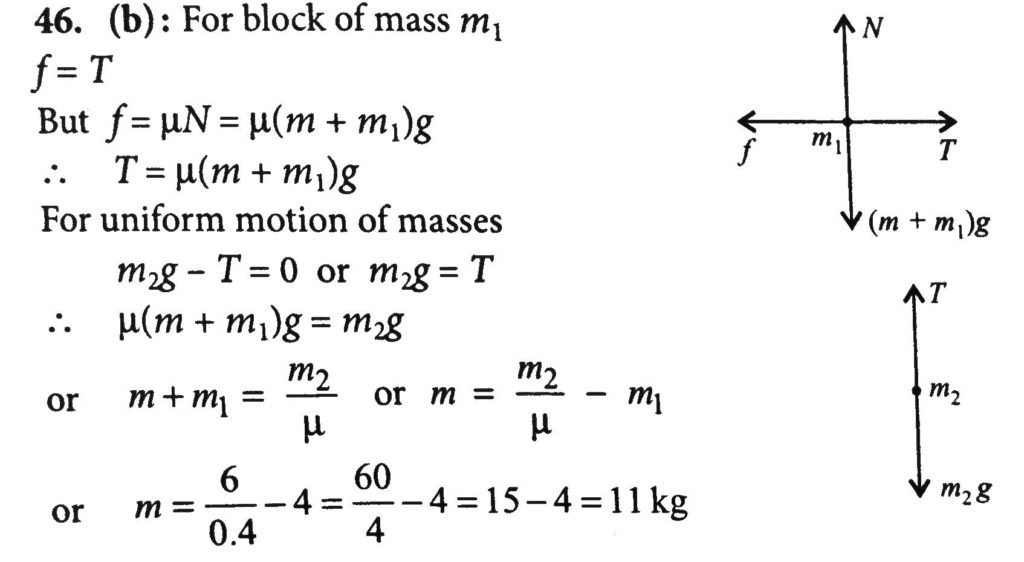
. My Notes Ask Your Teacher Two blocks of masses m1 and m2 are connected by a cord that passes over a pulley as shown in the figure below. Two blocks of masses m1 and m2 are placed in contact with each other on a smooth horizontal surface. 20 kg and 10 kg.
Two blocks of masses m1 and m2 are connected to each other and to a central post by cords. F- f ma Fma f. The block of mass m1 only touches the string and is moving upwards initially.
Two blocks of masses m1 and m2 are placed on a table in contact with each other as shown in the figure below. M1g - m2g sinθ - μ m2g cos θ and this pulls the two masses. A constant horizontal force F.
Two blocks of masses m1 44 kg and m2 48 kg are connected by a string as shown in the figure above. Class 11 Physics Systems of Particles and Rotational Motion Motion of Centre of Mass and Problems on it. Blocks 1 and 2 of masses m1 and m2 respectively are connected by a light string as shown.
Block m1 is on the left of block m2. A What must be the value of F if the blocks are to have an acceleration of 200 cms2. Block 1 moves at a constant velocity down the incline 30 degrees block two is not at incline it is straight.
The coefficent of kinetic friction between the upper block and the surface is 011. Since m2 is moving up frictional force. If a force F is applied on block of mass m2.
The coefficient of friction between each block and the table is 040. If we apply force then we have maximum acceleration. They rotate about the post at a frequency of f revolutions per second on a frictionless horizontal surface at distances r1 and r2 from the post.
Find the equation of motion for each of the blocks. The angle of the ramp is theta53 degrees. Two blocks of masses m1 and m2 are placed on a table in contact with each other with block 1 to the left of block 2.
So a F m1 m2 Now according to Newtons third law we have every action has an equal and opposite reaction. These blocks are further connected to a block of mass M by another light string that passes over a pulley of negligible mass and friction. 0 kg and the hanging mass is 1.
Calculate the change in gravitational potential energy for each of the blocks. The block m1 has a mass of 200 kg and m2 has a mass of 300 kg. The two masses are pulled apart and then released.
A horizontal force of magnitude F is applied to the block of mass m1. The block of mass m2 slides along a ramp where there is NO friction. They are released from rest.
Answered expert verified. M1 and m2 with an acceleration a. 7 hours ago02-Sept-2019 consists of two blocks masses m1 and m2 a spring spring constant k a massless rope and two massless pulleys.
Two blocks of masses m1 m2 are connected by light spring on a smooth horizontal surface. Discussion You must be signed in to discuss. Prove that the ratio of their acceleration is inversely proportional to their masses.
Two blocks of masses m1 and m2 are connected to each other and to a central post by cords. The inclined plane is frictionless and the. Two blocks of masses m 1 m 2 are connected by light spring on a smooth horizontal surface.
Two blocks of mass m1 05 kg and m2 17 kg are connected by a massless string as shown in the Figure. How large a force does m1 then exert on m2. μ m2g cos θ is also acting along with m2g sinθ.
Two blocks of masses m1 and m2 are connected by an ideal string passing over an ideal pulley. Two blocks with masses m1 300 kg and m2 500 kg are connected by a light string that slides over two frictionless pulleys as shownInitially m2 is held 500 m off the floor while m1 is on the floor. Both m1 and m2 are kept on a smooth surface.
The coefficient of kinetic friction between block 1 and the table is μ1 and. Use m1 300 g and m2 500 g. Mass of two blocks which are connected to massless string.
Two blocks of masses m1 and m2 are connected by a massless string that passes over a wheel of mass m as shown above. Suppose a force F is applied on m1 then total mass will be m1 m2. The net pulling force of the system is.
Dividing by m2 and expressing m1m2 as K. Find the maximum separation between the blocks. If the length of each string is 1.
When the wheel is released from rest in the position shown it undergoes an angular acceleration and rotates clockwise. The block with mass m1 is connected to a wall by a spring of spring constant k1 and the block with mass m2 is connected to m1 through another spring of spring constant k2. Mmass of the first block mmass of the second block atheir common acceleration Since we a taken the masses m1 m and m2 m as a single mass we would have to add their masses together.
A Find the acceleration of the system. M1g - m2g sinθ - μ m2g cos θ m1 m2 a. The string does not slip on the wheel and exerts forces T1 and T2 on the blocks.
Click hereto get an answer to your question Block 1 with mass m1 and speed 40 ms slides along an x axis on a frictionless floor and then undergoes a one - dimensional elastic collision with stationary block 2 with mass m2 040 m1 The two blocks then slide into a region where the coefficient of kinetic friction is 050. Remember to work in SI units. 2Derive an algebraic expression for the tension in the segment of the cord from the block.
Two blocks of masses m1 and m2 can move freely on a platform. Blocks l and 2 move with a constant velocity v down the inclined plane which makes an angle θ with the horizontal. The coefficient of kinetic friction between the block of mass m1 and the table is μ1 and that between the block of mass m2 and the table is μ2.
1Derive an algebraic expression for the tension in the segment of the cord from the post to the block of mass m1. The system is then released. Two blocks of masses m1 and m2 are pushed by a force F as shown in Fig.
To find the force between the two blockwe would just have to find the force exerted by m1 m on m2 m.

Two Blocks Of Masses M1 4 Kg And M2 6 Kg Are Connected By A String Of Negligible Mass Passing Over A Frictionless Pulley As Shown In The Figure Below The Coefficient Of Friction
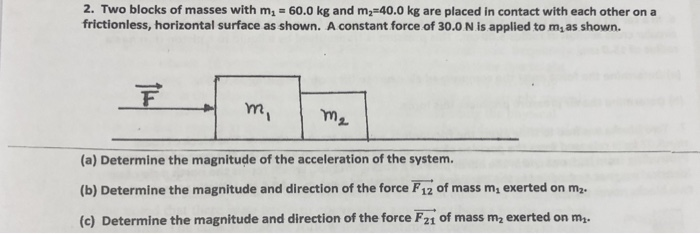
Solved 2 Two Blocks Of Masses With M1 60 0 Kg And M2 40 0 Chegg Com
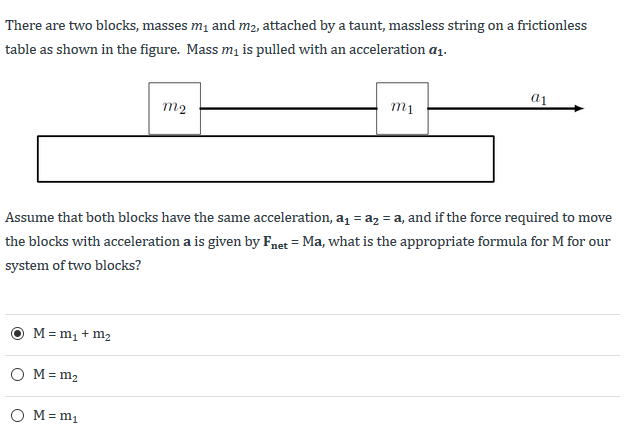
Solved There Are Two Blocks Masses M1 And M2 Attached By A Chegg Com
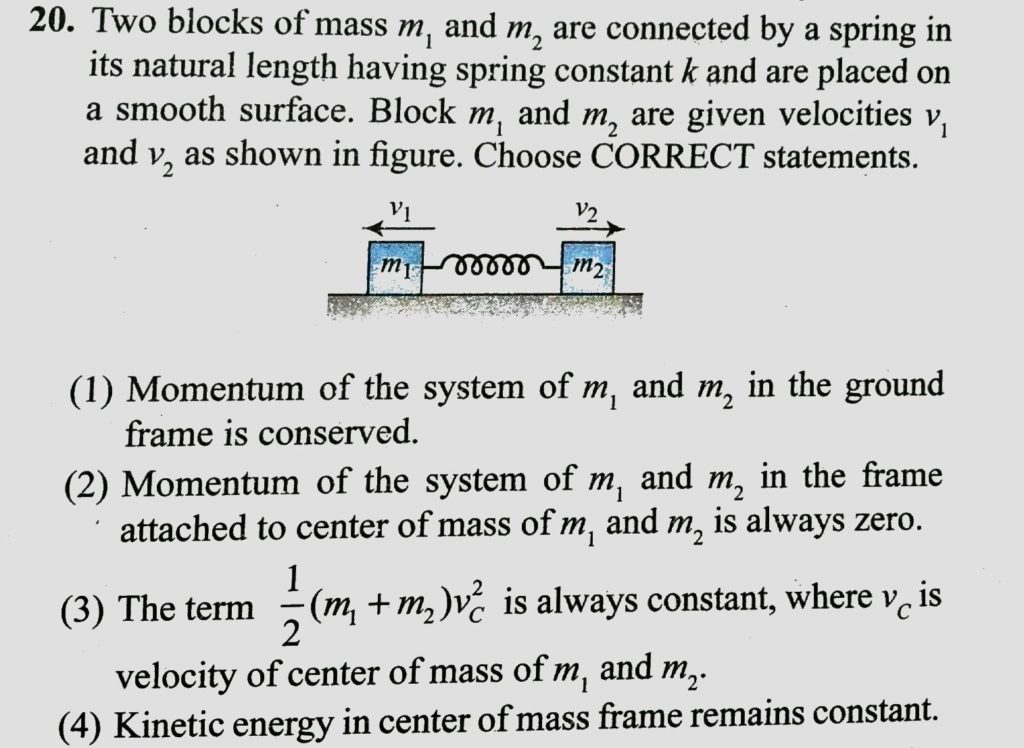
Two Blocks Of Mass M1 And M2 Are Connected By A Spring In Its Natural Length Having Spring Constant K And Are Placed On A Smooth Surface Block M1 And M2 Are
0 Comments